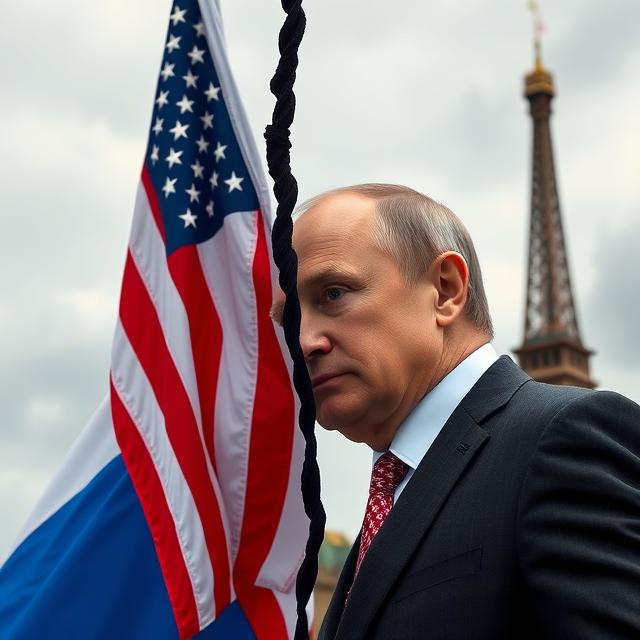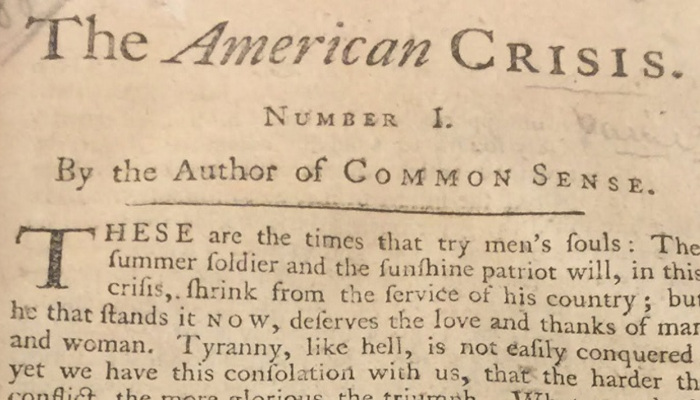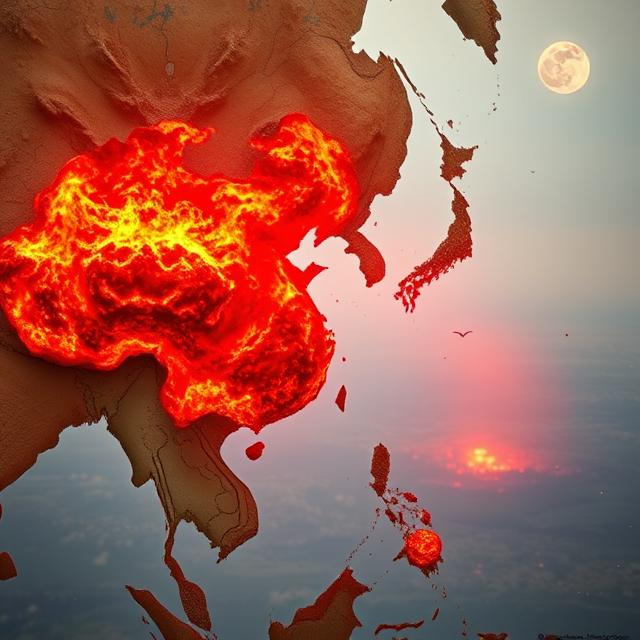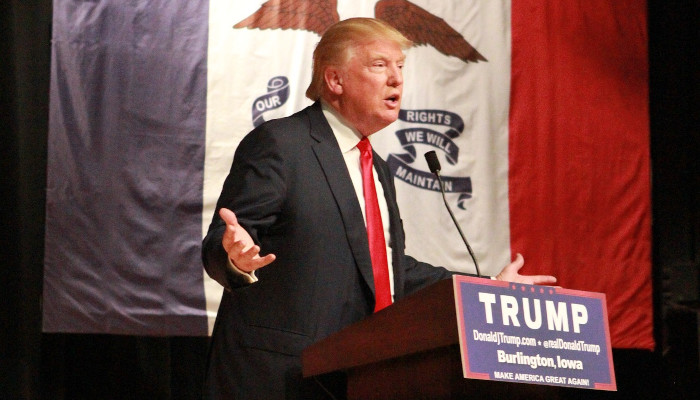
The United States may want to drive a wedge between Russia and China, but lack of coordination is opening fissures with its allies. Thus, the US might achieve little or no results while Moscow gains much more political space.
While US President Donald Trump is talking to his Russian counterpart, Vladimir Putin, he’s also engaging with his Chinese counterpart, Xi Jinping. The American strategy is to drive a wedge between the two and turn them against each other. The goal could be to have Russia turn against China and thus force Beijing to cave to US demands.
It’s not clear whether this strategy will be successful[1], but it’s already sending shockwaves through US allies east and west of Russia. Some push to band together and press the US for a more assertive stance with Moscow. Without that, some are considering regrouping in an alliance of US friends even without the US.
Once, some EU leaders like Angela Merkel hoped to cope with Putin through “Wandel durch Handel” or change through trade. The policy notoriously failed, as Bill Emmott notes[2]. Yet now, US leaders simply want to take Putin at face value, yielding to him without even thinking of changing him.
The questions are: and then? Why? And what will happen?
The Beginning
But first, we need to take a short step back. The game among the three—the US, China, and Russia—started 17 years ago, and the dynamics among them were very different. On August 8, 2008, at the inauguration of the Beijing Olympics, Chinese President Hu Jintao was sitting in the front with US President George W. Bush. Putin was parked on a bench behind. The Chinese wanted to show the world their new G2 friendship with the US, but Russia had other plans.
During the same hours, Russian forces attacked Georgia and carved out the Ossetia region. A ceasefire was hastily agreed upon on August 12. Yet, despite the initial shudder, the event was soon shelved. The West and the US decided to overlook the invasion as a minor trespass, an indiscretion, a peccadillo. It was only three days during the Olympics.
In 2014, the Russian annexation of Crimea took a few weeks, a little longer. On February 27, Russian soldiers crossed the border and rapidly took over the region, which was annexed through a referendum on March 18. It was also fast, perhaps before the US had time to process and react. By then, the US, and maybe even Putin, had a long-term plan. With souring ties with China since 2010 Obama’s Pivot to Asia, the US wanted to rope in Russia to encircle Beijing. Russia was keen on raising its price with the US.
It possibly created the climate for the Russian intervention in Syria, upholding the Assad regime in Damascus. Moscow also backed Iran, which had already deployed troops and weapons in Damascus against the local Daesh Sunni insurgents.
On September 30, 2015, Russia intervened by sending bombers to Syria for extensive airstrikes against cities taken by anti-Assad forces. The Russian presence in Damascus lasted de facto until last year when Turkey-backed troops eventually swept through the country deserted by both Russian and Iranian militaries, otherwise engaged.
Looking at these 10-17 years of history, we don’t see a significant change in the present US peace offerings. The only significant change was that in 2022, before the ruinous Russian failure in Ukraine, the US and Europe decided to draw a line in the sand and back Kyiv against Moscow. The help, contrary to much propaganda, was limited and timid.
Western weapons were trickled in time and quantity to Ukraine, and larger political considerations also constrained the scope of offensives and strikes. Most importantly, while it was clear that, at least since 2023, Russia was rebuilding its military industry, the US and Europe didn’t follow through.
Only now, in 2025, after Trump’s intimations, is Europe seriously cranking up its military industries. Now, with the possibility of an infamous deal between the US and Russia, many European countries are dropping their caution and may encourage Kyiv for actual deep attacks into the Russian heartland.
In other words – today, Russia may have fewer incentives than ten years ago to accede to US requests. Ten years ago, the two didn’t reach an agreement, and it’s unclear why they should have one now.
At the same time, China doesn’t show too many signs of concessions. Premier Li Qiang announced on March 23 that Beijing is prepared for big external shocks while it will open further to foreign investment. Then, perhaps he suggests that no breakthrough is expected with Trump’s summit and that Xi is ready to oppose US demands. Or possibly Beijing is posturing before a deal.
Fissures between the US and its Allies
The reality is that while the US may seek to push for a quick settlement, its alliances are unraveling in Europe and Asia. Whatever deal the US could reach with Russia would fall short compared to the fissures in its transatlantic and transpacific relations. The EU, the UK, and Norway are economically larger than China, with about half its population. Japan’s economy alone is three times larger than Russia’s, with almost the same population. Canada, Australia, and New Zealand are edging closer to the UK and away from the US.
Here’s the stark reality: the fissures between the US and its allies make a deal with America less attractive for Russia or China. The game has apparently changed again. The US is right in probing both Russia and China and also showcasing to the world its pursuit of peace, but if it breaks or even strains its bond with all its allies, it will be losing on all sides. Russia and China will not clinch a deal with the US, losing its most precious asset—its network of allies. They will want to play America along while opening different paths with the US’s (former?) allies.
The US apparently underestimated the allies’ reactions to its Russian overtures and opened a space where Russia or China could drive a wedge between the US and its allies. Even if US allies won’t turn against America, the distance creates new space for maneuvering for Russia. It’s time for America to think differently. America needs a more significant long-term plan where talking to adversaries is undoubtedly necessary, but this can’t be done by breaking with allies.
The US may need a broader approach to consider the future.
finis
[1] See https://www.appiainstitute.org/articles/america/give-ukraines-war-a-chance/ and https://www.appiainstitute.org/articles/america/a-us-long-term-strategy/
[2] https://billemmott.substack.com/p/the-russian-bear-cannot-be-tamed?r=8exma&utm_campaign=post&utm_medium=email&triedRedirect=true










Losing the war of wedges – Charm – Daily News